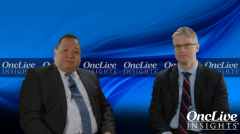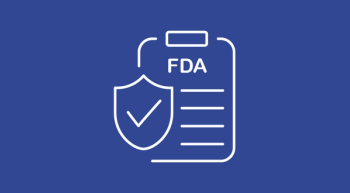
Prophylactic Approaches to the Management of CIM in ES-SCLC
Expert panelists review considerations in the prophylactic treatment of chemotherapy-induced myelosuppression with special attention paid to unmet needs related to the use of G-CSF and ESAs.
Episodes in this series

Transcript:
Martin Dietrich, MD, PhD: Dr Santos, could you give us an overview of the NCCN [National Comprehensive Cancer Network] recommendations regarding the management of myelosuppression?
Edgardo Santos, MD, FACP: From the NCCN, we have a stratification based on the regimen therapies for SCLC. Certain regimens carry a higher risk to developing this problem of suppression. As you mentioned, Martin, there’s the issue of not only neutropenia but also severe anemia and thrombocytopenia. There are different regimens. The NCCN recommends the use of prophylaxis on regimens that have a high risk of developing myelosuppression, which is more than 20%. There’s another category of regimen if the risk of developing myelosuppression is 10% to 20%, plus another clinical risk factors: age, bone marrow infiltration, prior radiation therapy, prior chemotherapy, and comorbidities such as diabetes, chronic obstructive pulmonary disease, and liver disease all play an important role in deciding what patient population deserves prophylactic management to avoid this myelosuppression.
Martin Dietrich, MD, PhD: Has that changed for you in the pandemic?
Edgardo Santos, MD, FACP: That changed significantly during the pandemic. With all the issues we’ve had in the last 2 years to avoid exposure with the patient, for obvious reason, we sometimes have had to modify not only the regimen but also our approach to being more proactive with the prophylaxis. We don’t want to send the patient¾in the middle of pandemic¾to the hospital when the health care system was completely overwhelmed with so many cases of COVID-19.
Martin Dietrich, MD, PhD: In your clinic, if you have an extensive-stage small cell lung cancer patient, do you favor a prophylactic approach of treatment? How do you manage those patients?
Edgardo Santos, MD, FACP: You and I are thoracic oncology. We see a lot of patients with extensive-disease small-cell lung cancer. That regimen for extensive-disease small cell lung cancer is very myelosuppressive, so we always use prophylactic treatment. In my clinic, I always use prophylactic to avoid that kind of problem. Usually, it’s neutropenia, but sometimes patients that develop pancytopenia, in which red blood cell, platelet, and white blood cell counts are depleting.
Martin Dietrich, MD, PhD: It’s very difficult to predict what a patient is going to have.
Edgardo Santos, MD, FACP: It’s very difficult. Some patients respond very well to prophylaxis, and some of them do not, but we’ve made progress in this field.
Martin Dietrich, MD, PhD: Are there any unmet needs that you see for patients?
Edgardo Santos, MD, FACP: In terms of prophylaxis, an unmet need is to continue making progress in what we have right now. We have a medication that can protect stem cells. We’re using it now, specifically in small cell lung cancer. I’d like to see an expansion in these prophylaxes¾which are proactive, not reactive¾in order to create a regimen other than 1 for a small cell lung cancer. There’s an unmet need in oncology on how to take advantage of this kind of prophylaxis and put it in another clinical setting.
Transcript edited for clarity.
Newsletter
Knowledge is power. Don’t miss the most recent breakthroughs in cancer care.
















































































